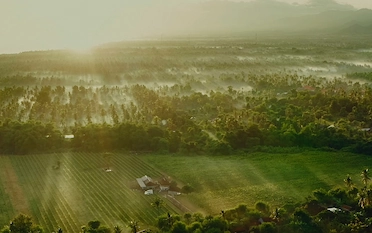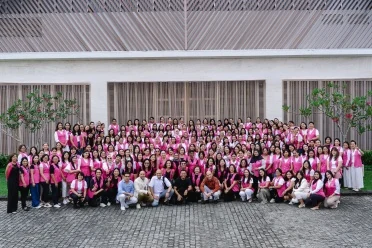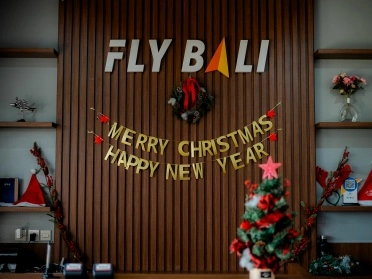As the warm breeze sweeps across the Indonesian island of Bali, a vibrant spectacle graces the clear blue skies. From June to September, a kaleidoscope of colorful kites adorn the heavens, bringing smiles to the faces of both young and old. This ancient tradition, deeply intertwined with Balinese culture, transforms the skies into a canvas of joy and reverence.
Soaring Splendor : Unravelling Facts About Bali's Traditional ‘Janggan’ Kite
A Season of Soaring Splendor
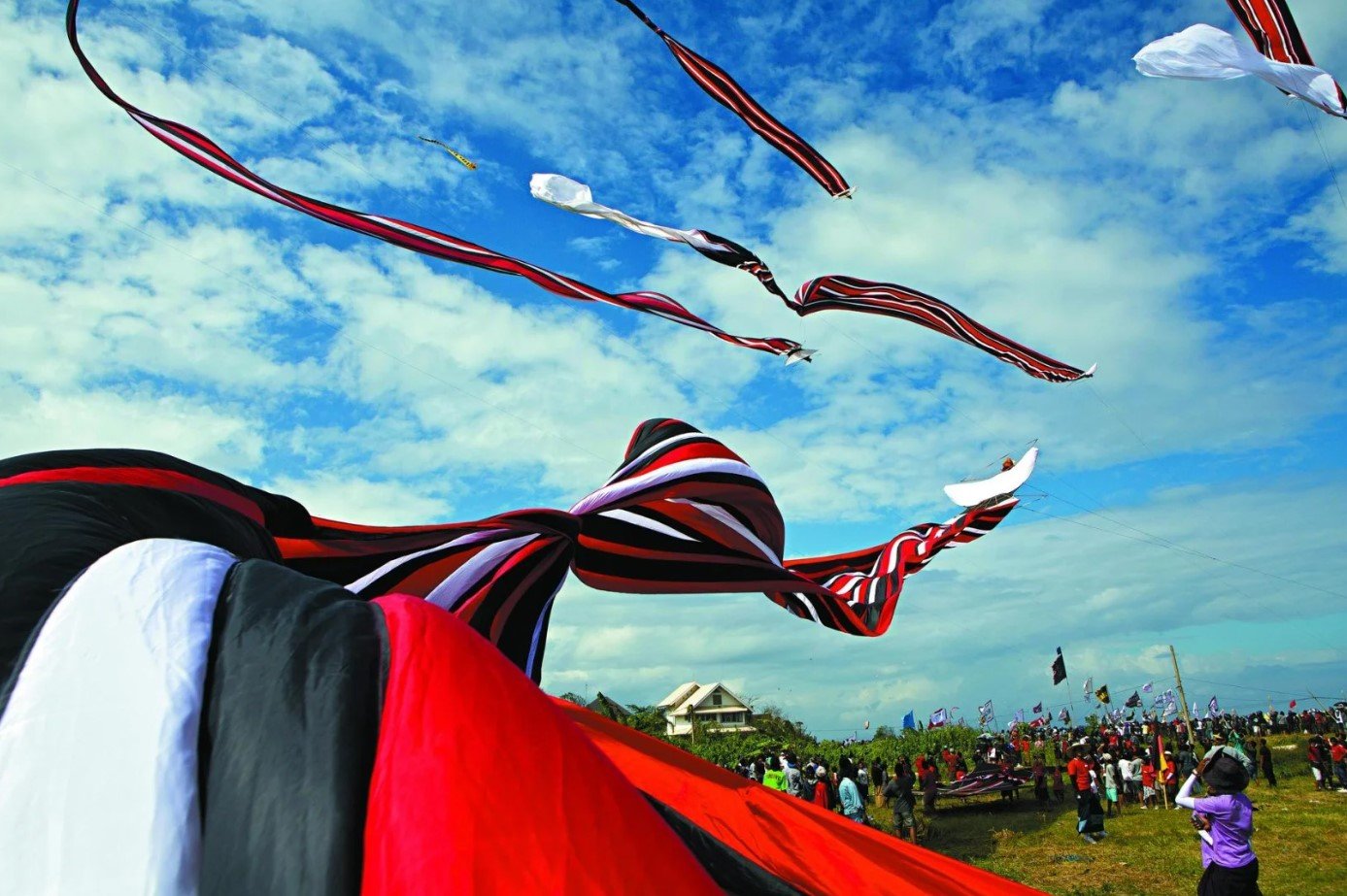
During these months, when the dry season prevails and the winds are at their strongest, the skies of Bali become a playground for kites. This is the prime time for this age-old tradition to take flight. Yet, the sight of kites soaring gracefully isn't limited to this season alone; throughout the year, Bali's skies are occasionally painted with these majestic creations. Locally known as "layang-layang," these traditional kites embody the spirit of the island, reflecting its diversity and creative brilliance.
Crafting Dreams and Culture
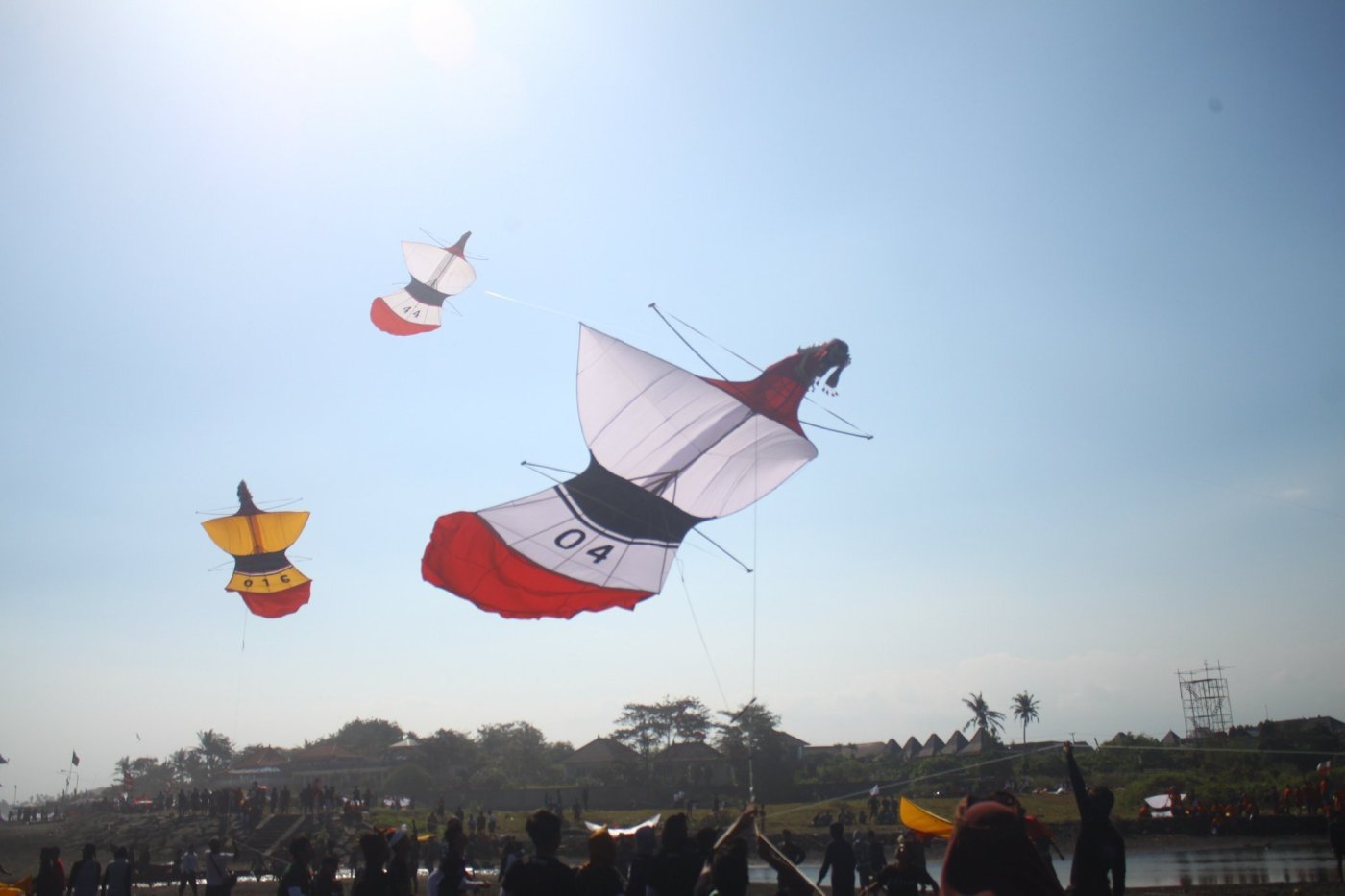
Balinese kites come in an array of shapes and sizes, adorned with intricate designs and vivid hues. From the bustling beaches to the serene rice fields, people of all ages gather to participate in this cherished tradition. It's a moment of connection, as families, friends, and neighbors unite to send their kites soaring towards the heavens.
But beyond the mirthful play, flying kites in Bali is a practice deeply rooted in spirituality. It's a sacred act of gratitude to the gods and a request for abundant harvests, known as "Rare Angon." The chosen colors hold significant meaning, representing the incarnations of Hindu deities – black, white, red, and yellow.
Shapes that Stirs the Air

Bali's traditional kites come in three distinct forms, each with its own mesmerizing charm:
Bebean Kite: Resembling a graceful fish, the Bebean kite glides through the air with elegance, captivating onlookers with its fluid motion.
Janggan Kite: The Janggan kite portrays a vision of long-tailed birds or dragons, evoking a sense of wonder and enchantment as it dances amidst the clouds.
Pecukan Kite: Taking the shape of an enormous leaf, the Pecukan kite is renowned for its challenging flight. It demands skill and finesse to navigate, becoming a testament to the mastery of its handlers.
Craftsmanship and Bonding
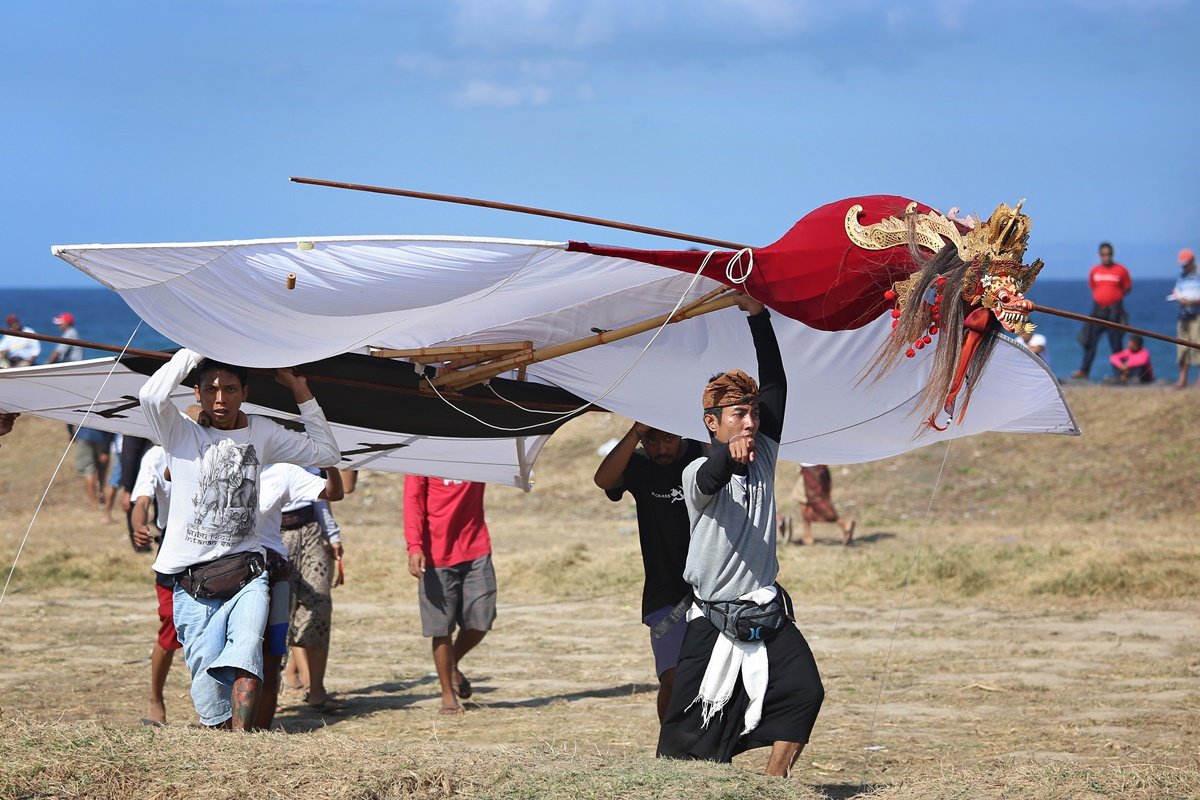
The tradition of kite-making is an integral part of Balinese life, transcending generations. Young boys learn the art of crafting kites from bamboo and delicate "kertas minyak," a thin, colorful paper. This process not only imparts skills but also fosters meaningful father-son connections, treasured moments that are passed down through time.
As boys grow into adults, the transition to silk-cloth and rope signifies a deeper level of expertise. Large kites, spanning over 5 meters in length and requiring a team effort to maneuver, showcase the communal spirit that underpins Balinese culture.
A Marvel in the Sky
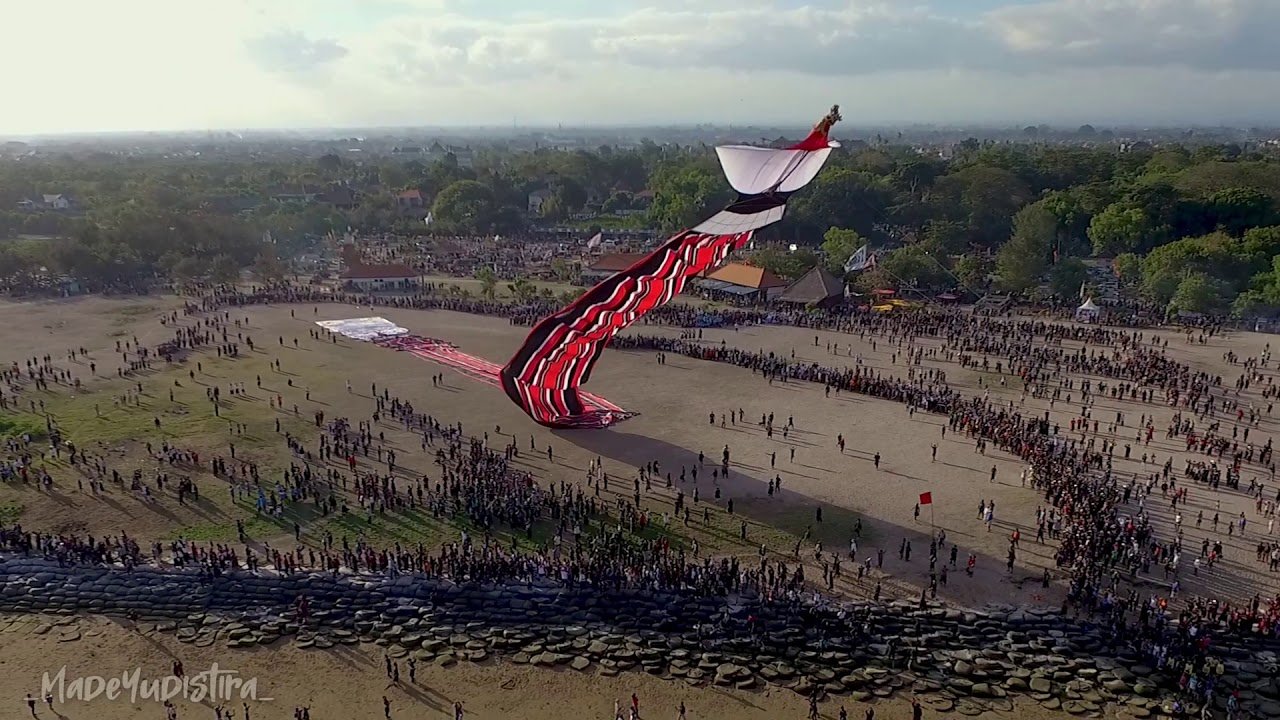
Among the countless kites that grace the skies, one stands as a testament to both craftsmanship and grandeur. The Meranggi family proudly flies the largest fish-shaped kite, a colossal creation boasting a 150-meter tail, an 80-kilogram weight, a wingspan of 10 meters, and a length of 15 meters. This awe-inspiring marvel captures the essence of Bali's skyward symphony, inviting admiration and reverence from all who witness its flight.
A Blend of Tradition, Unity, and Beauty
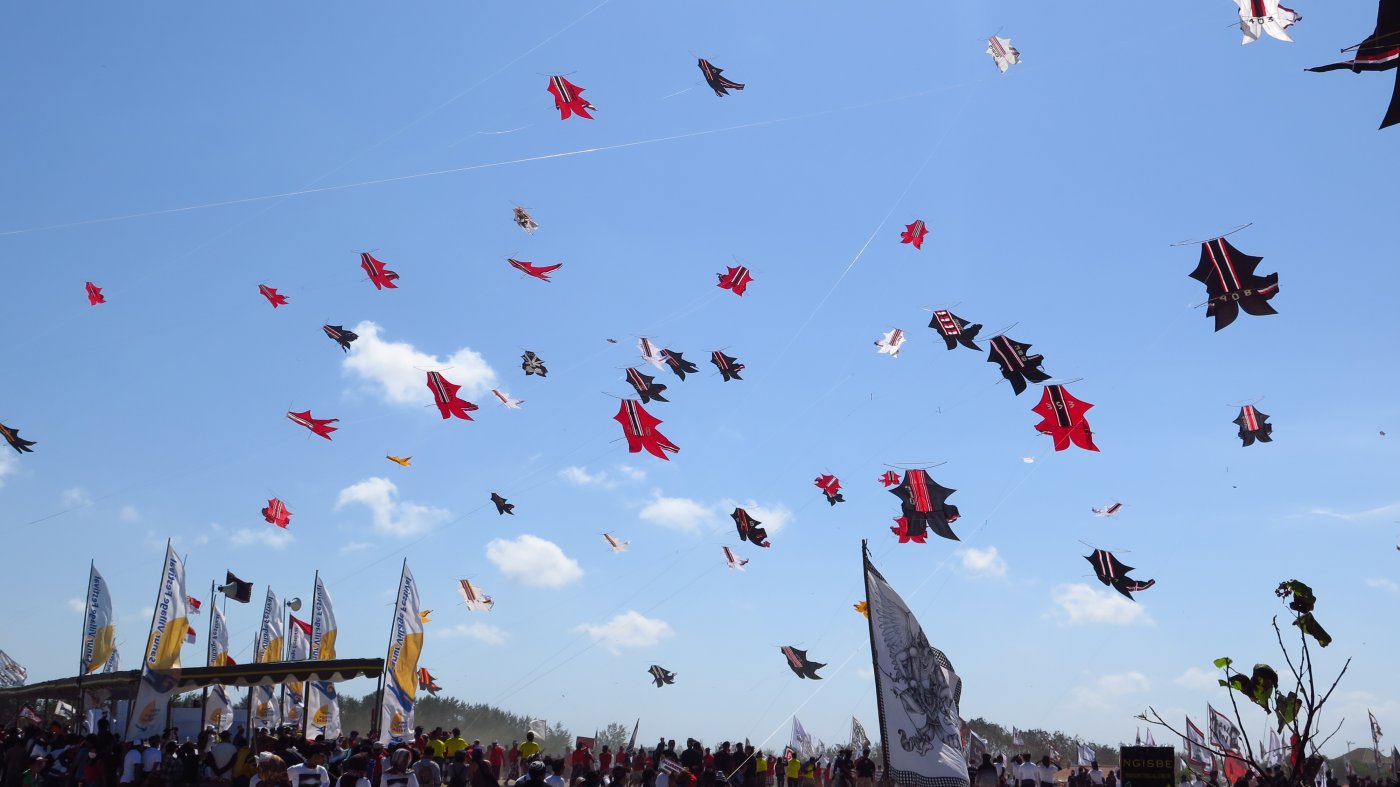
In the heart of Bali's kites lies more than a simple recreational pastime. These soaring wonders embody the island's cultural heritage, weaving together tradition, spirituality, and artistry. As kites take to the heavens, they carry the dreams of the young and the wisdom of the old, uniting generations and reflecting the soul of Bali itself. So, whether you're gazing at the skies in the bustling months of June to September or in the quieter moments of the year, the sight of a Balinese kite in flight will always remind you of the island's enduring spirit and the harmonious dance between earth and sky.




 Billy Bagus
Billy Bagus
 Aug 25, 2023
Aug 25, 2023



